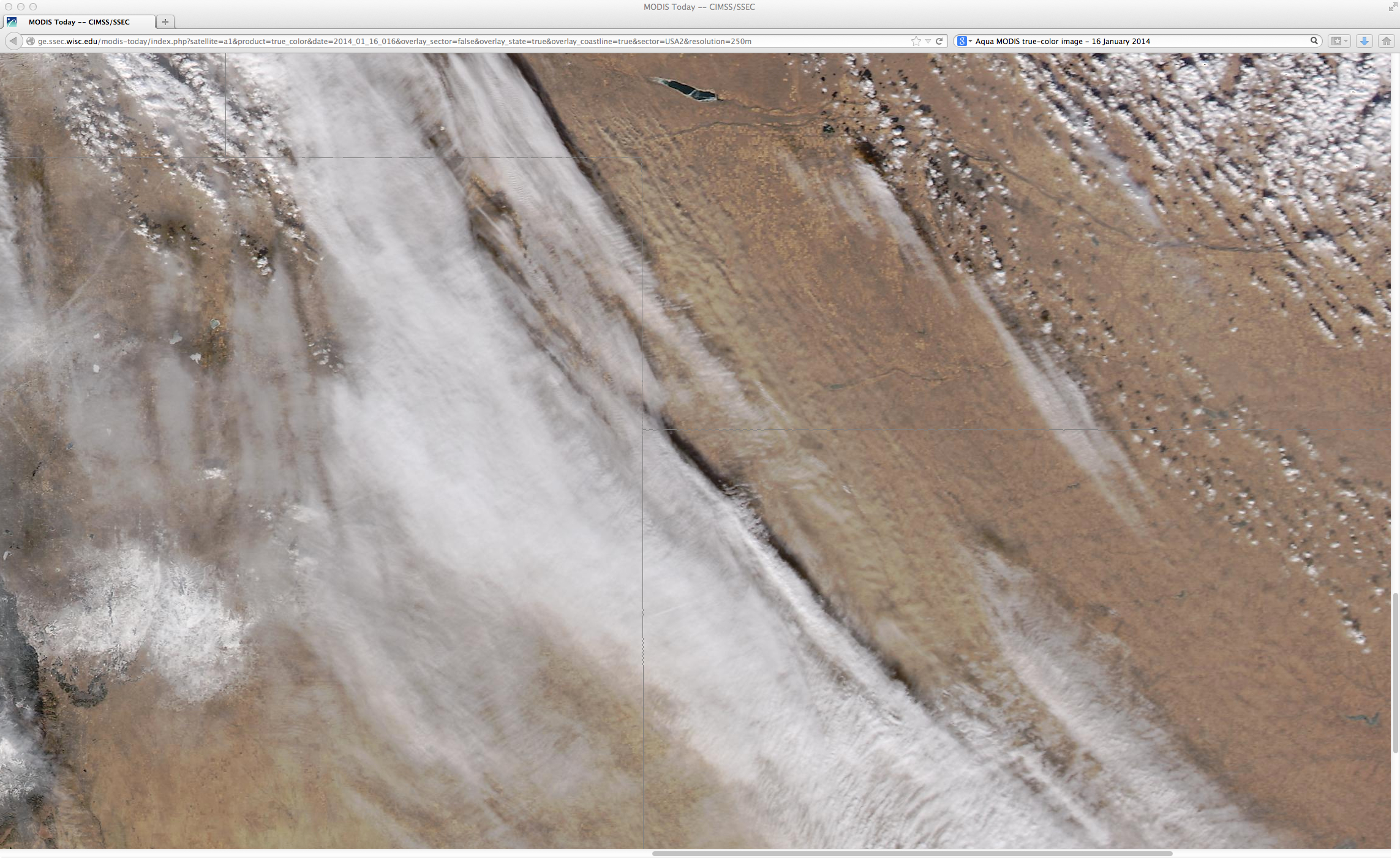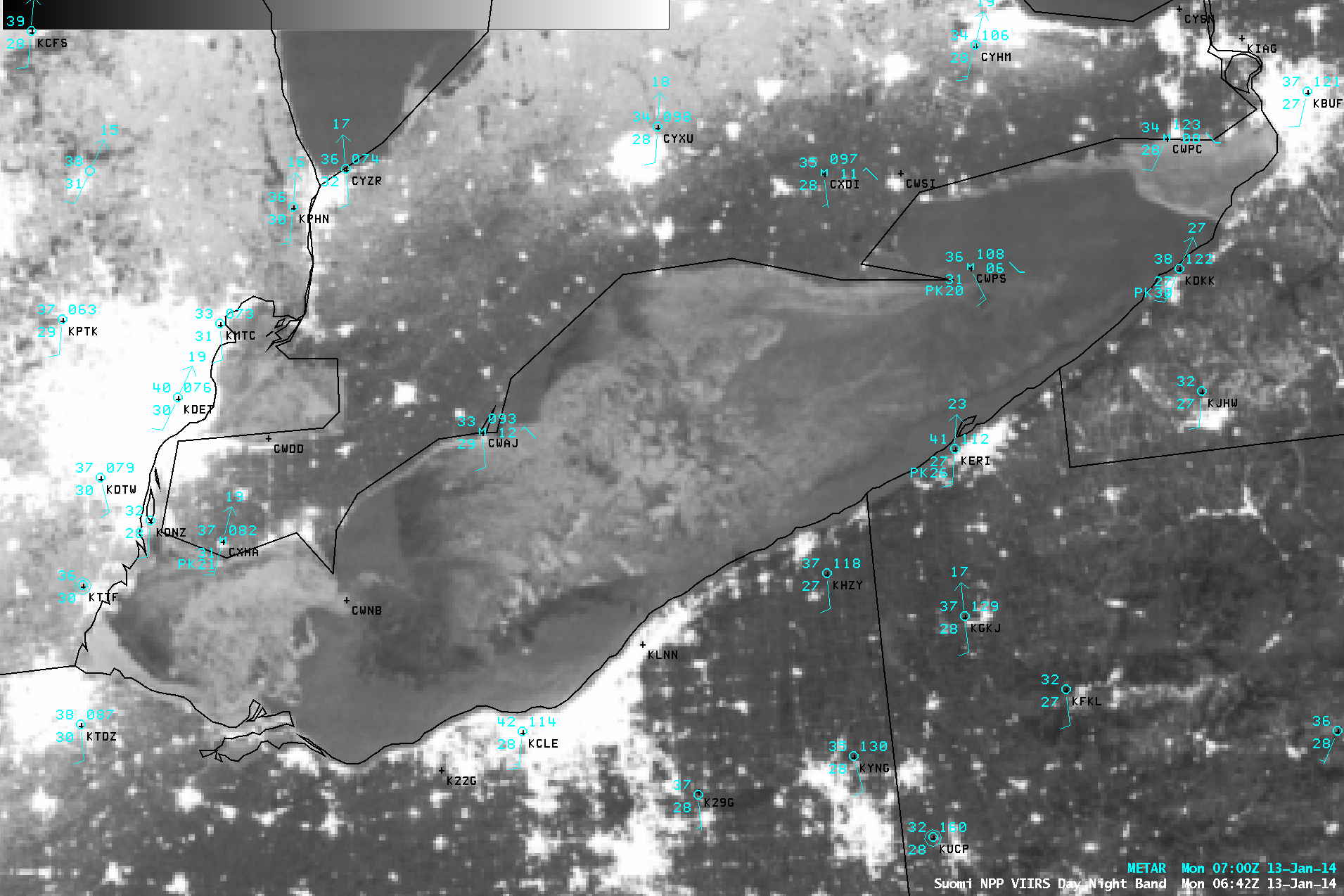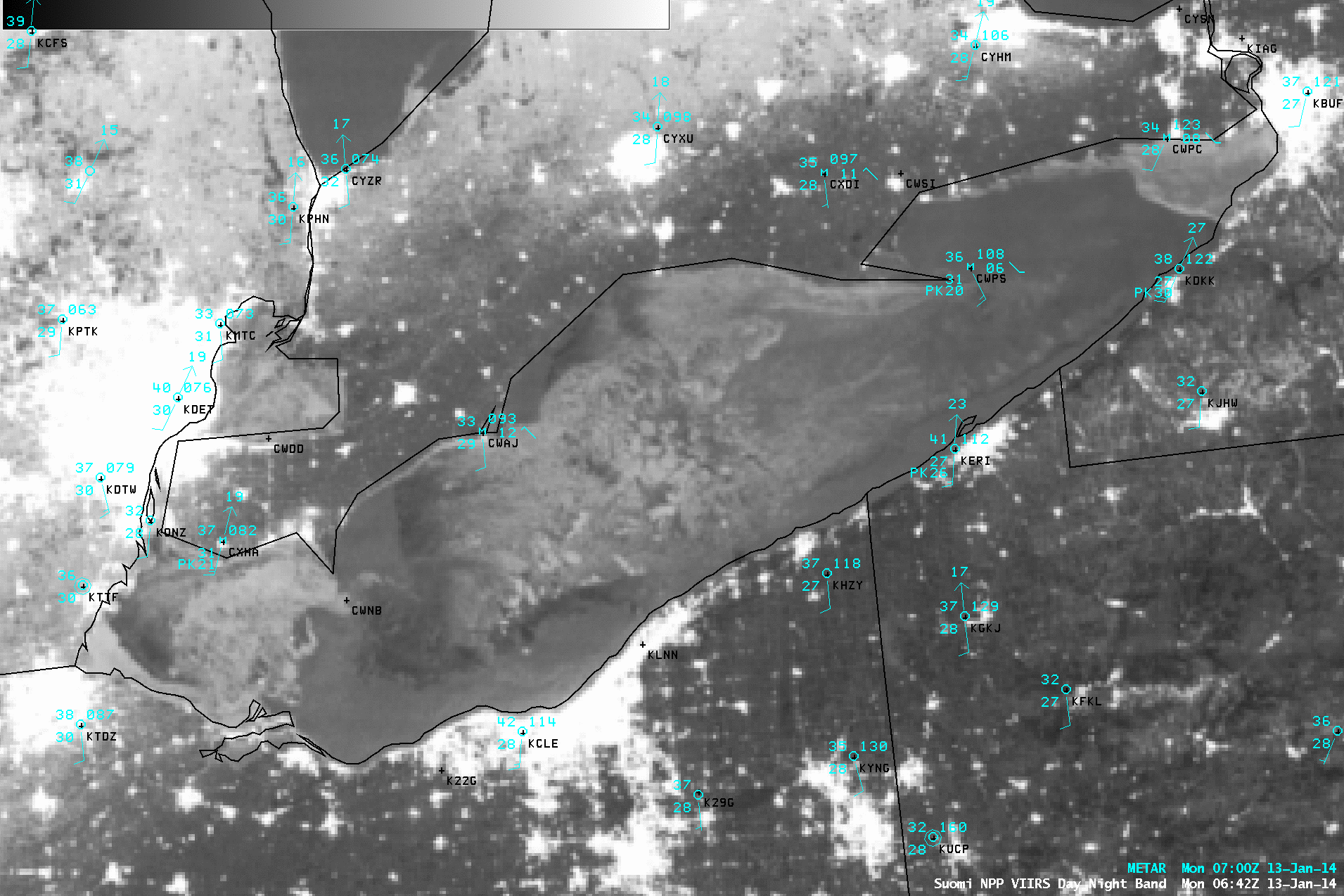17:12 UTC images of 1-km resolution Suomi NPP VIIRS 0.64 µm visible channel data (above) and 11.45 µm IR channel data (below) displayed evidence of “transverse banding” structures along portions of the cloud top of the baroclinic leaf feature — such transverse banding is often associated with turbulence. Pilot reports of turbulence for the hours ending at 17, 18, and 19 UTC are also plotted on the VIIRS images; over this region there were 5 reports of severe turbulence within this 3 hour period.
GOES-13 water vapor images with overlays of CRAS model 250 hPa wind speed isotachs (below) showed that there was a strong (150-160 knot) upper level jet streak along the back (western) edge of the baroclinic leaf during the 12 UTC to 21 UTC period. At 18 UTC, the 2 pilot reports of severe turbulence were located in the vicinity of the left entrance region of the jet streak — an area generally expected to have strong downward vertical velocities forced by ageostrophic circulations near the altitude of the jet streak.
GOES-13 water vapor images with overlays of CRAS model pressure of the PV1.5 surface (below) — generally thought of as representing the dynamic tropopause — indicated that the tropopause was as low as 500-600 hPa within the narrow warm/dry band just west of the back edge of the baroclinic leaf during the 12 UTC – 21 UTC time period.
An automated Turbulence Risk product (below) also indicated that tropopause folding (blue) was occurring along the western edge of the baroclinic leaf, bringing the tropopause as low as 22,500 feet. The yellow ‘+’ symbols represent a portion of the flight track of United Airlines Flight 89.
View only this post Read Less


![GOES-13 6.5 µm water vapor channel images [click to play animation] GOES-13 6.5 µm water vapor channel images [click to play animation]](https://cimss.ssec.wisc.edu/satellite-blog/wp-content/uploads/sites/5/2014/01/US_Water_Vapor_20140116_1840.png)
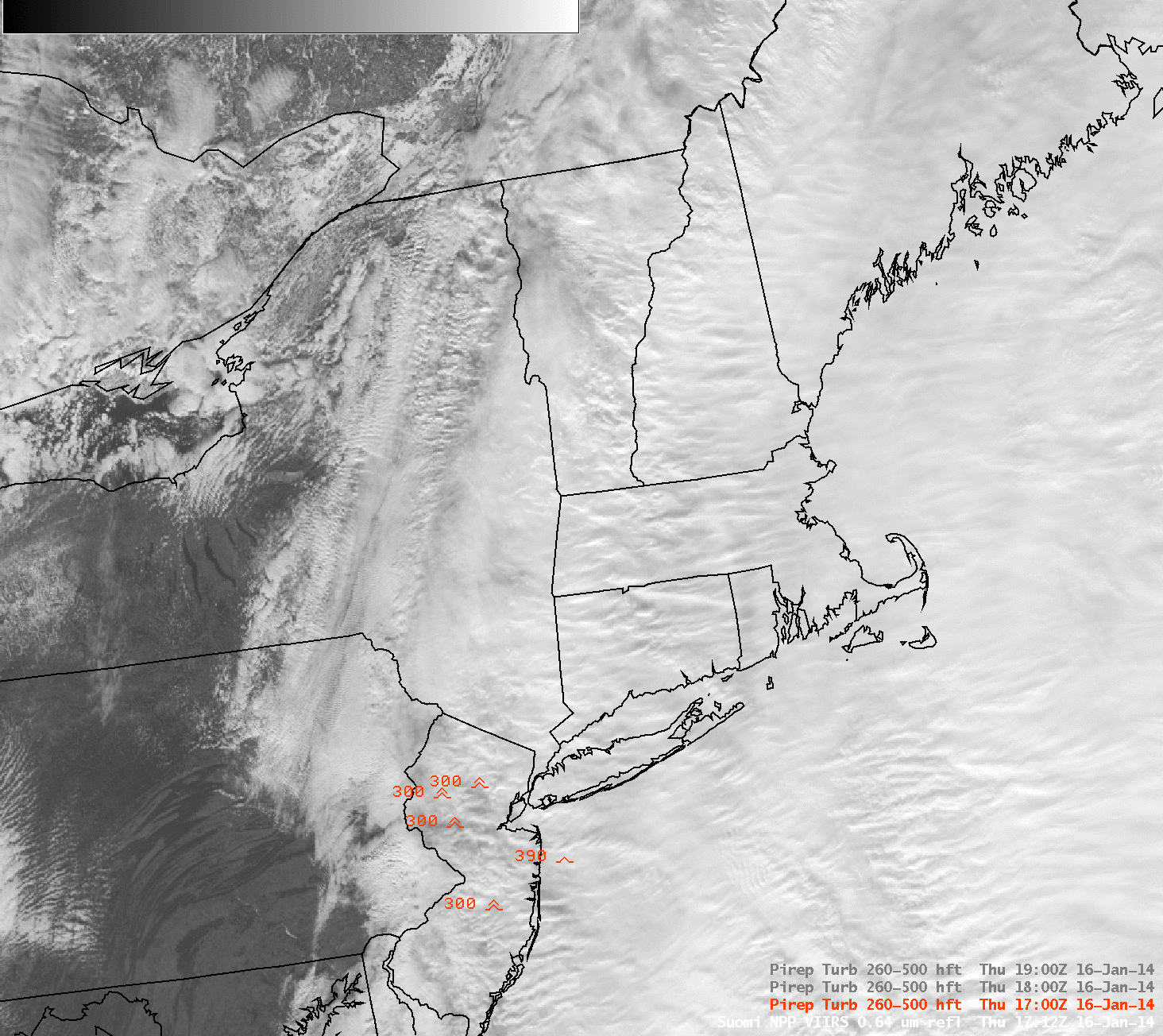
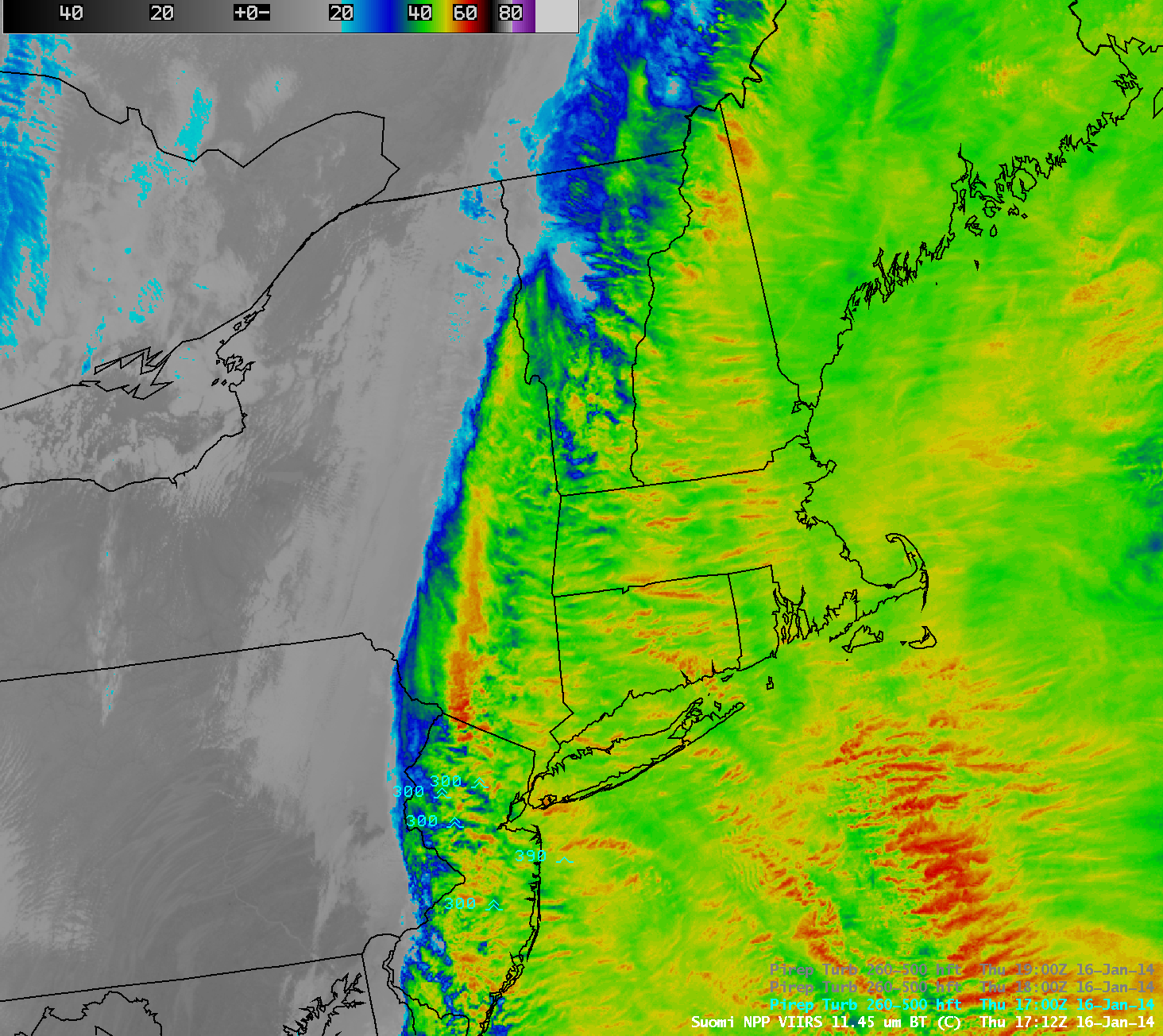
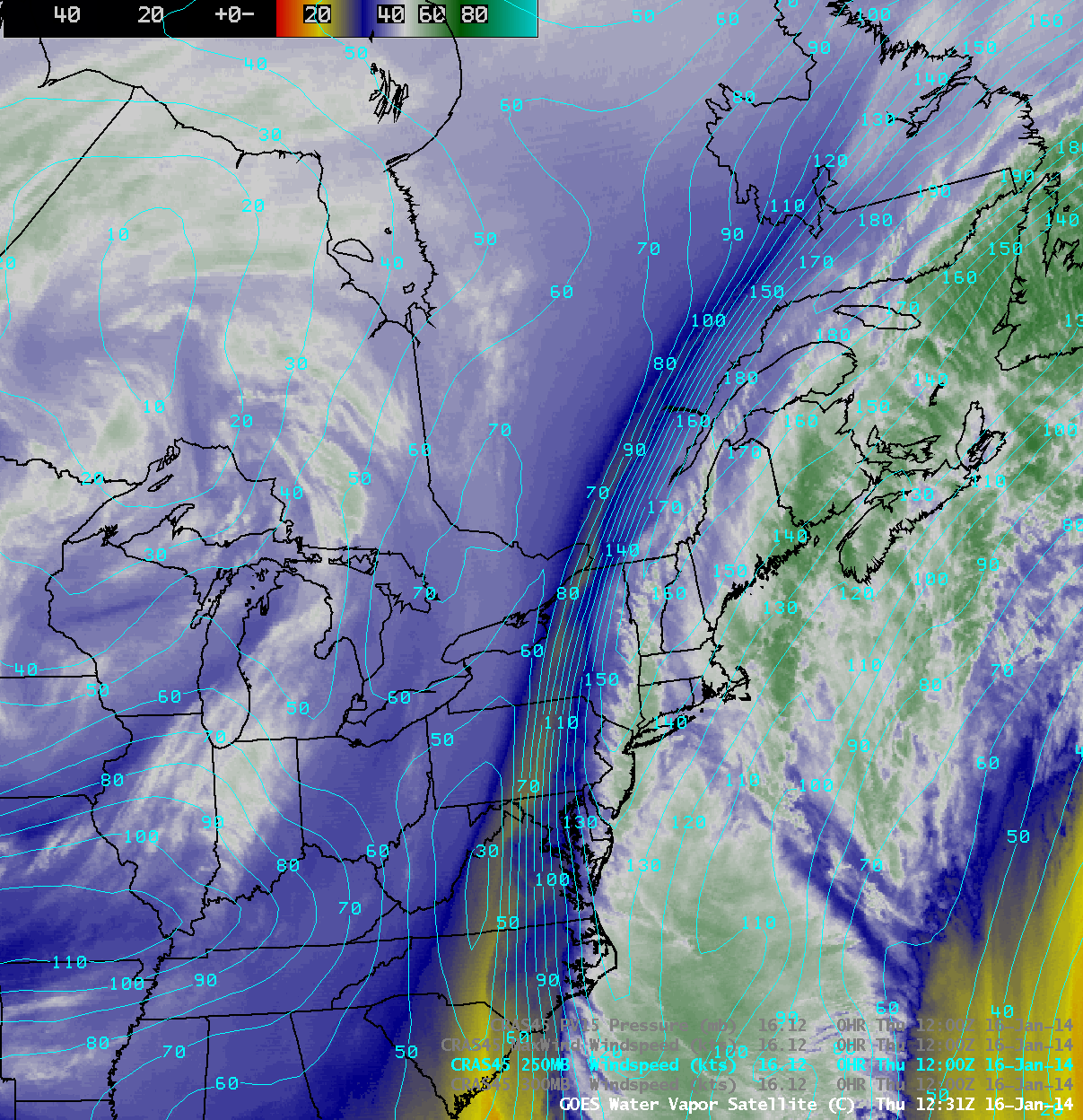
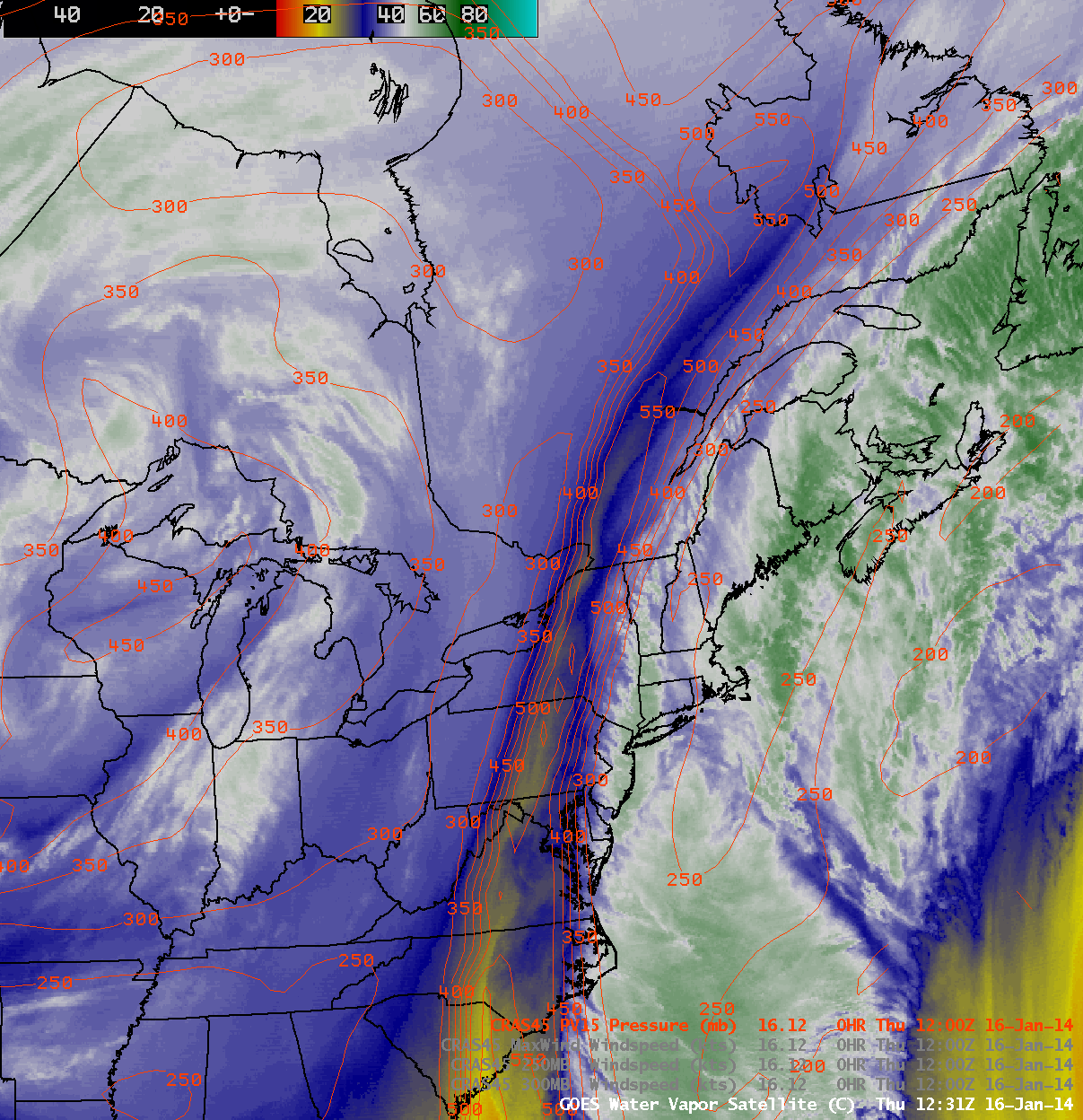
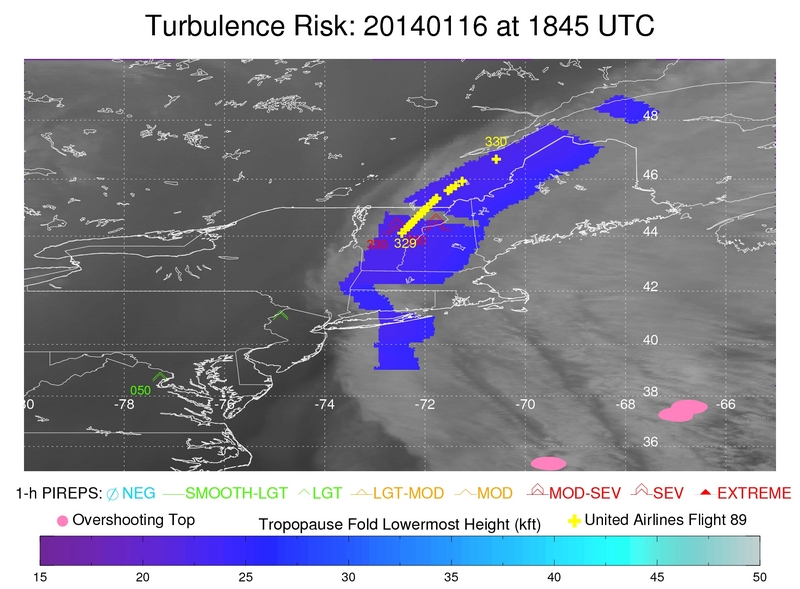
![MTSAT-2 0.68 µm visible channel images [click to play animation] MTSAT-2 0.68 µm visible channel images [click to play animation]](https://cimss.ssec.wisc.edu/satellite-blog/wp-content/uploads/sites/5/2014/01/140115-16_mtsat_visible_se_austrailia_10.jpg)
